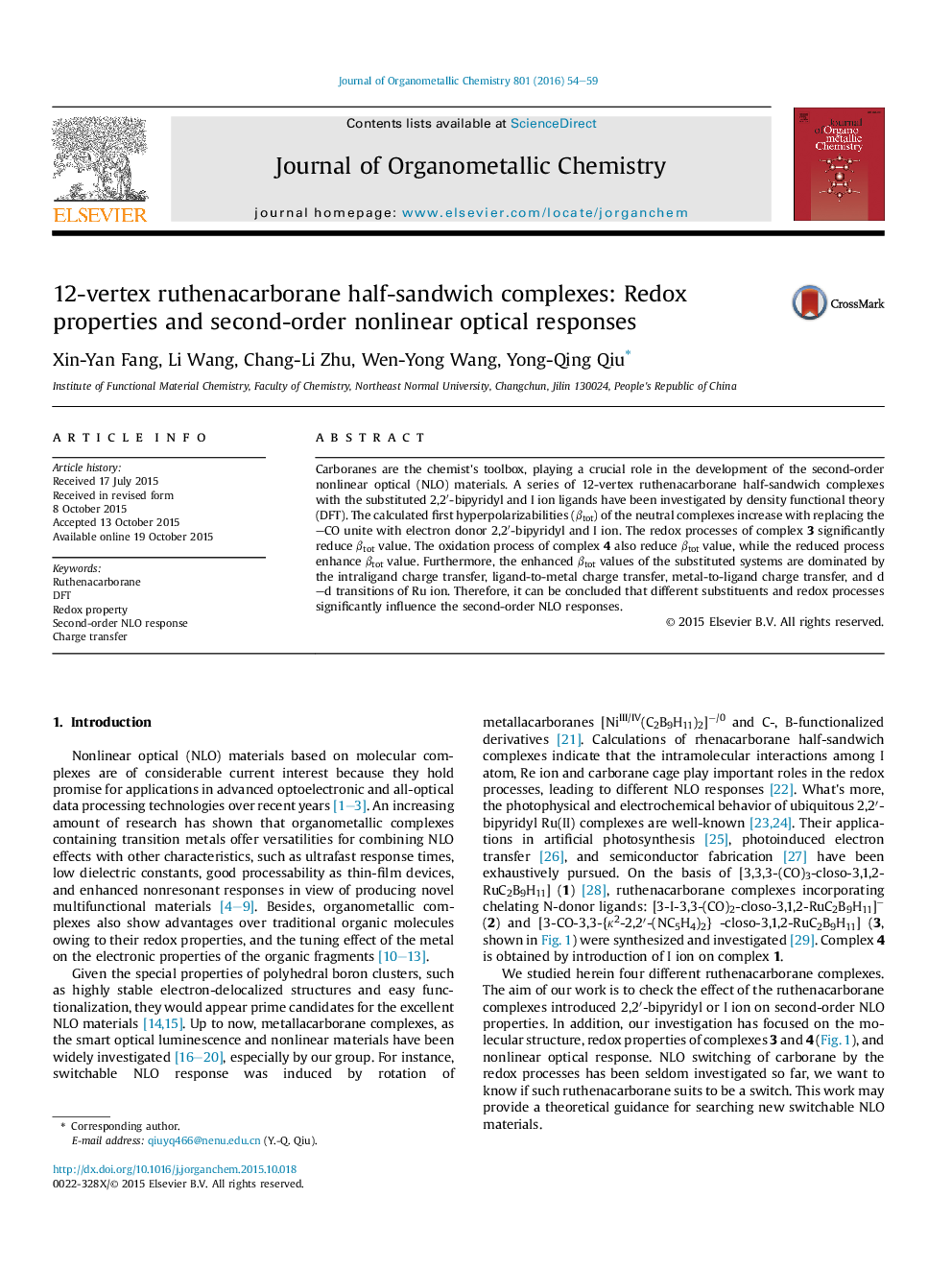| کد مقاله | کد نشریه | سال انتشار | مقاله انگلیسی | نسخه تمام متن |
|---|---|---|---|---|
| 1323067 | 1499844 | 2016 | 6 صفحه PDF | دانلود رایگان |

• The βtot value can be efficiently tuned by the 2,2′-bipyridyl or I ion.
• The differences on NLO properties are due to a change in charge transfer pattern.
• The redox processes lead to different βtot values of 3 and 4, specifically.
Carboranes are the chemist's toolbox, playing a crucial role in the development of the second-order nonlinear optical (NLO) materials. A series of 12-vertex ruthenacarborane half-sandwich complexes with the substituted 2,2′-bipyridyl and I ion ligands have been investigated by density functional theory (DFT). The calculated first hyperpolarizabilities (βtot) of the neutral complexes increase with replacing the –CO unite with electron donor 2,2′-bipyridyl and I ion. The redox processes of complex 3 significantly reduce βtot value. The oxidation process of complex 4 also reduce βtot value, while the reduced process enhance βtot value. Furthermore, the enhanced βtot values of the substituted systems are dominated by the intraligand charge transfer, ligand-to-metal charge transfer, metal-to-ligand charge transfer, and d–d transitions of Ru ion. Therefore, it can be concluded that different substituents and redox processes significantly influence the second-order NLO responses.
A series of 12-vertex ruthenacarborane half-sandwich complexes with the substituted 2,2′-bipyridyl and I ion ligands have been investigated by density functional theory (DFT). It can be concluded that different substituents and redox processes significantly influence the second-order NLO responses.Figure optionsDownload as PowerPoint slide
Journal: Journal of Organometallic Chemistry - Volume 801, 1 January 2016, Pages 54–59